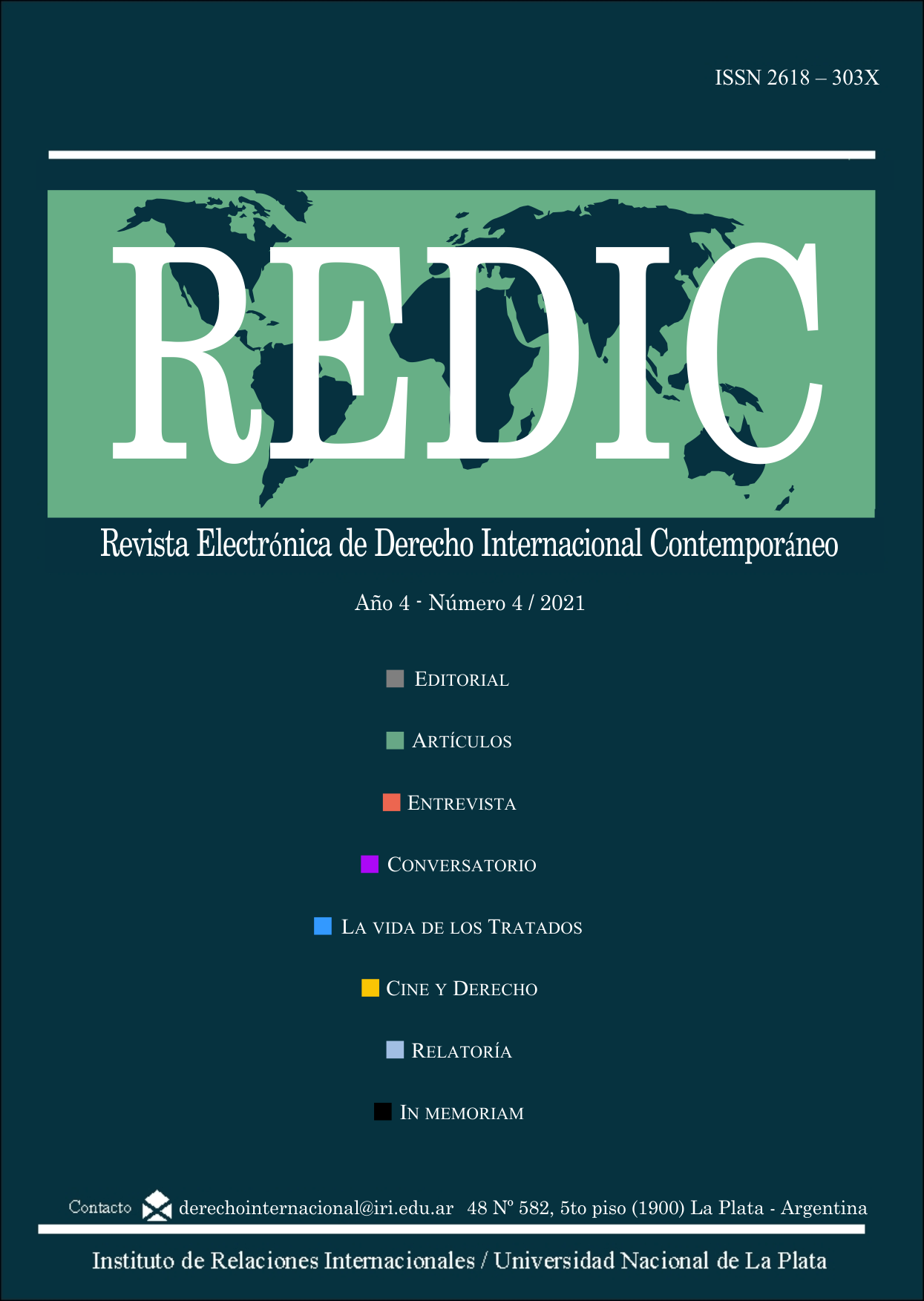Women and Peace and Security: Some reflections 21 years after the adoption of United Nations Security Council resolution 1325
DOI:
https://doi.org/10.24215/2618303Xe029Keywords:
Security Council Resolution 1325, Women and peace and security Agenda, International law, Women’s RightsAbstract
Security Council Resolution 1325 (2000) launched the Women and peace and security Agenda at the United Nations. A set of ten resolutions has contributed to consolidating the Agenda, creating a corpus juris that develops and, on occasions, revises International Law norms, incorporating a gender perspective. From the beginning, there were divergences between aspects of the Agenda and International Humanitarian Law. The normative development has been carried out through soft law instruments. Resolution 1325 (2000) has been the starting point of a customary norm that incorporates a gender perspective into International Humanitarian Law and International Human Rights Law. As from resolution 1820 (2008), sexual violence against women and girls in an armed conflict and in post-conflict situations is an issue that concerns the maintenance of international peace and security within the meaning of the United Nations Charter. The Agenda has impacted relations with conventional sources of International Law.
Downloads
References
Barrow, A. (2010). UN Security Council Resolutions 1325 and 1820: constructing gender in armed conflict and international humanitarian law. International Review of the Red Cross, 92 (877), 221-234. http://doi.org/10.1017/S1816383110000081
Bennoune, K. (2007). Do We Need New International Law to Protect Women in Armed Conflict. Case Western Reserve Journal of International Law, 38(2), 363-391. https://scholarlycommons.law.case.edu/jil/vol38/iss2/6
ICRC Statement during the AU Peace and Security Council (PSC) open session to celebrate UNSC Res 1325. International Committee of the Red Cross (ICRC). Statement Delivered by Mr. Valery Mbaoh Nana, Deputy Head of Delegation to the AU. Adis Abeba, 17 de octubre de 2019.
Informe del Secretario General sobre las mujeres y la paz y la seguridad, S/2015/716, 16 de septiembre de 2015. https://undocs.org/es/S/2015/716
Oosterveld, V. (2009). Feminist Debates on Civilian Women and International Humanitarian Law. Law Publications, 104, 385-402. https://ir.lib.uwo.ca/lawpub/104
Recomendación General Nº 30 del Comité para la Eliminación de la Discriminación contra la Mujer, CEDAW/C/GC/30, 1º de noviembre de 2013. https://undocs.org/es/CEDAW/C/GC/30
Shaffer, G. C. y Pollack, M. A. (2010). Hard Versus Soft Law in International Security. Boston College Law Review, 52(4), 1147-1241. https://lawdigitalcommons.bc.edu/bclr/vol52/iss4/1
Women, Peace and Security, Study submitted by the Secretary-General pursuant to Security Council resolution 1325 (2000). https://www.un.org/ruleoflaw/files/womenpeaceandsecurity.pdf
Additional Files
Published
How to Cite
Issue
Section
License
Aquellos autores/as que tengan publicaciones con esta revista, aceptan los términos siguientes:
- Los autores/as conservarán sus derechos de autor y garantizarán a la revista el derecho de primera publicación de su obra, el cuál estará simultáneamente sujeto a la Licencia de reconocimiento de Creative Commons (BY-NC-SA) 4.0 que permite a terceros compartir la obra siempre que se indique su autor y su primera publicación esta revista, no se haga uso comercial, y si se remezcla, se transforma o se crea a partir del material, se debe distribuir bajo la misma licencia del original.
- Los autores/as podrán adoptar otros acuerdos de licencia no exclusiva de distribución de la versión de la obra publicada (p. ej.: depositarla en un archivo telemático institucional o publicarla en un volumen monográfico) siempre que se indique la publicación inicial en esta revista.
- Se permite y recomienda a los autores/as difundir su obra a través de Internet (p. ej.: en archivos telemáticos institucionales o en su página web) antes y durante el proceso de envío, lo cual puede producir intercambios interesantes y aumentar las citas de la obra publicada. (Véase El efecto del acceso abierto).





















